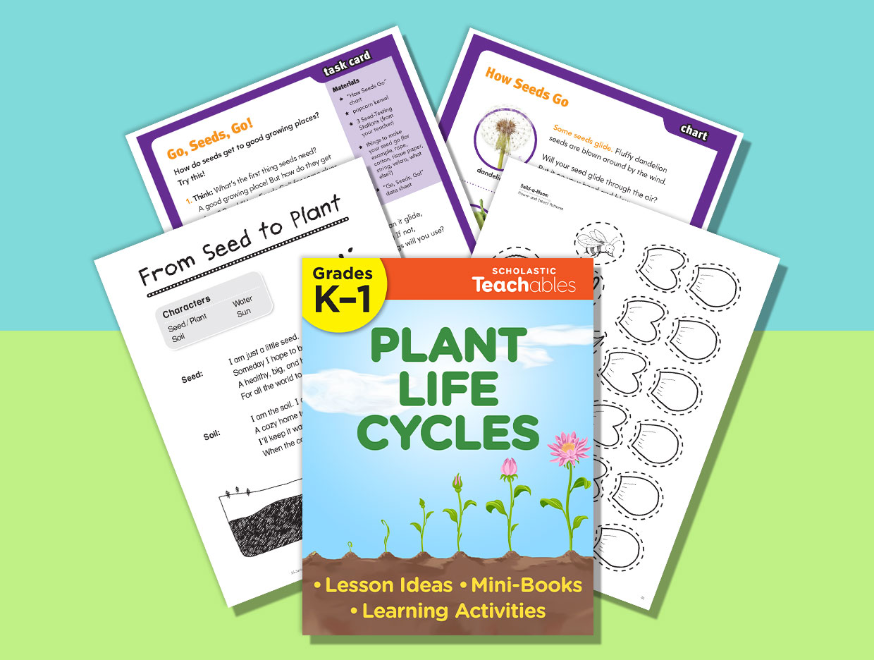Looking for trusted materials to teach your students about seeds, germination, plant growth, and more? Compiled by educational experts and just a quick download away, this printable pack from Scholastic Teachables has everything you need for a unit on plant life cycles. Plus, these hands-on science investigations come with teaching guidance, so setting up a series of lessons for your young scientists is quick and easy!
For more science learning and fun, download this ready-to-go unit on butterfly life cycles today!
From the unit-opening play (provided in both English and Spanish) through the wrap-up craftivities, the resources in the Plant Life Cycles Pack will help students in grades K–1 understand how plants grow. Also included are four leveled mini-books for guided reading levels B–E, a manipulative Sunflower’s Life Cycle Science Wheel, a hands-on science investigation that teaches students how seeds travel in search of fertile ground, writing and math activities, and more. With this ready-to-go science pack, you’ll not only introduce your students to the wonderful and amazing world of plants, you’ll cultivate the next generation of botanists and biologists, too!
Get the Plant Life Cycles Pack today in the Scholastic Teachables Digital Downloads shop and explore our other skill and thematic packs, including more science packs and Differentiation Packs for reaching all of your learners!
Resources in the article are free to Scholastic Teachables subscribers. Not a subscriber? Sign up now, and get a 30-day trial, or purchase each resource a la carte through the links above.
Want more great content? Subscribe to our Teacher Newsletter below and get teaching ideas delivered right to your inbox.
